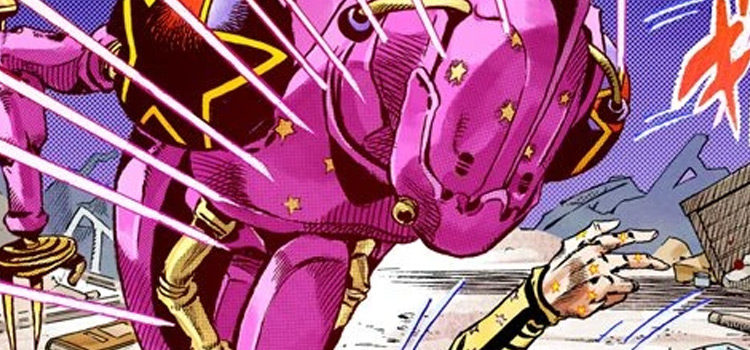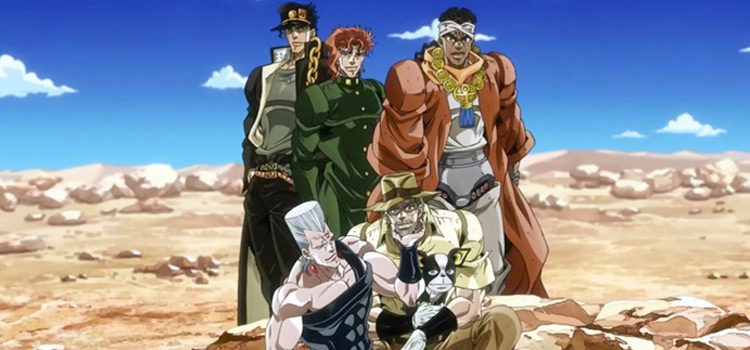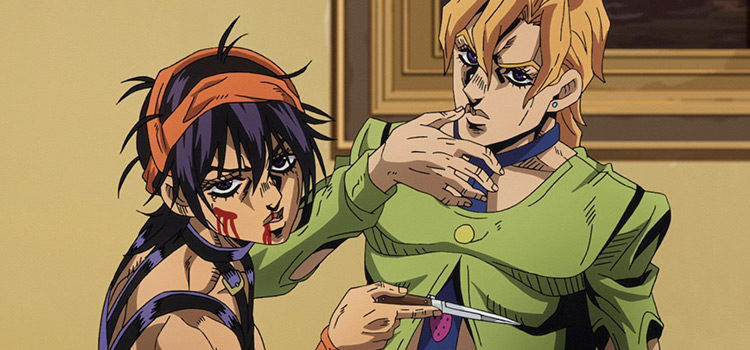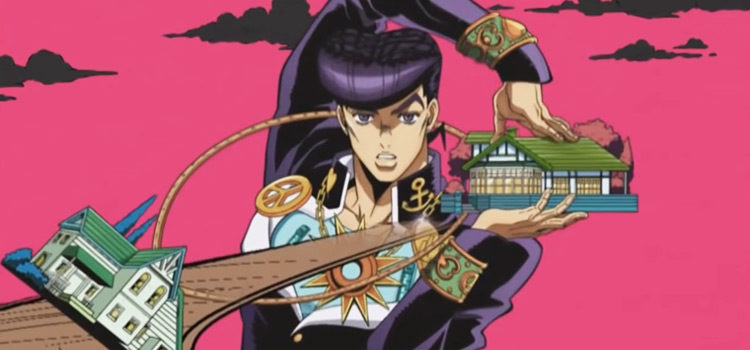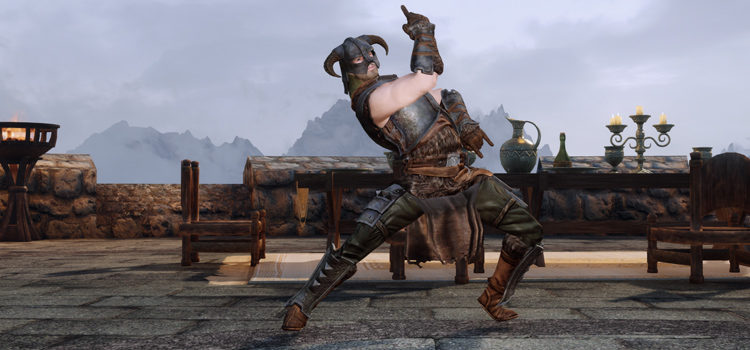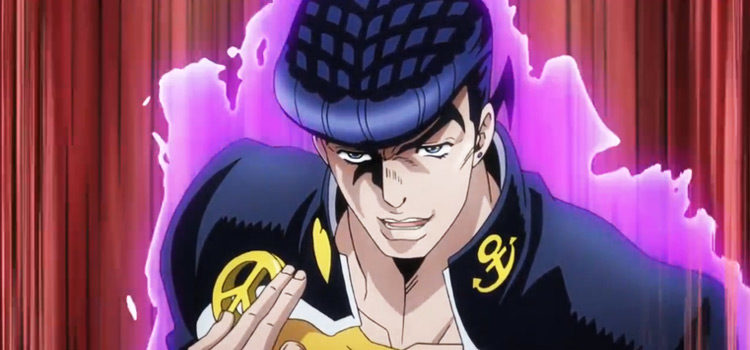Best Openings in JoJo’s Bizarre Adventure (All Ranked)
This post may contain affiliate links. If you buy something we may get a small commission at no extra cost to you. (Learn more).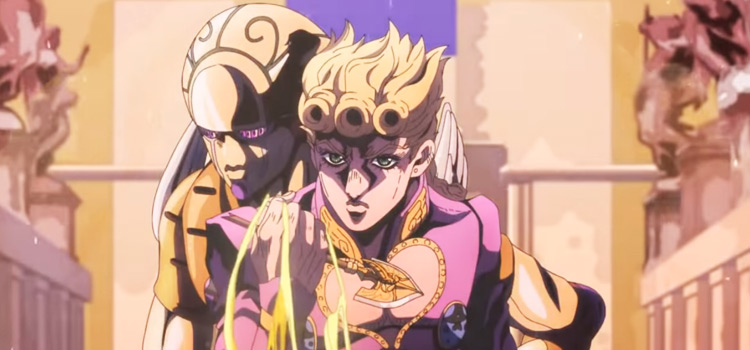
Hirohiko Araki’s ‘JoJo’s Bizarre Adventure’ has quickly turned from having a Western cult following, to being one of the most beloved and well-known shounen of the modern era.
This is due to Araki’s brilliant ability to tell a story of heritage and determination, interwoven with deep thematic genre changing to keep the reader(or viewer) constantly intrigued.
We had a JJBA adaptation at the turn of the century. However most believe it took the source material too seriously and didn’t adapt it properly.
David Production’s exceptional handling of the franchise has pleased and satisfied old fans, whilst bringing new fans in with some of the smoothest animation and sound design available in anime.
The openings are no exception.
And here I’ll be going through and ranking them all, from Part 1: Phantom Blood all the way through to Part 5: Golden Wind!
9. Part 3: Opening 1: Stand Proud
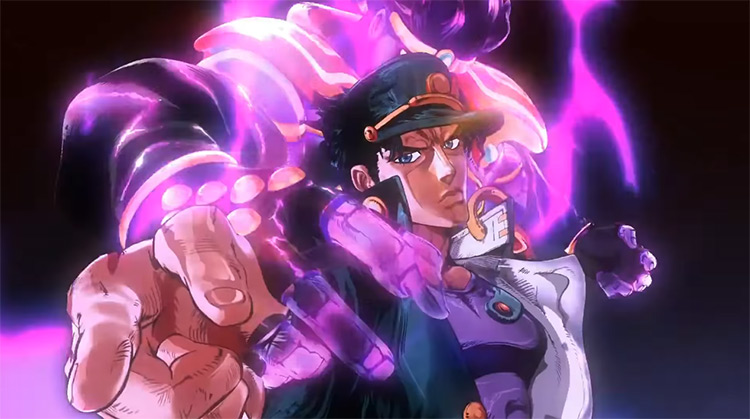
The opening starts with an electric guitar, our previous protagonists fading out to reveal Jotaro and his Stand, [Star Platinum], before introducing us to our other characters on their exploits to Egypt.
The animation is outstanding. Fluid and dynamic, mixing manga panels and sensibilities with the CGI-blended style of the first part to create something epic.
Its furious speed hypes you up for what’s to come.
This is a telling testimony to how fantastic every entry is on this list, when this is in the lowest-ranked place.
Stand Proud is an exceptional opening. It builds upon the foundations the previous ones set.
Whereas Jonathan’s ‘So No Chi No Sadame’ was a masculine battlecry, and Joseph’s ‘Bloody Stream’ an flamboyant dance, Jotaro’s ‘Stand Proud’ represents his character perfectly – stoic, awesome, and badass.
8. Part 3: Opening 2: So No Chi No Kioku
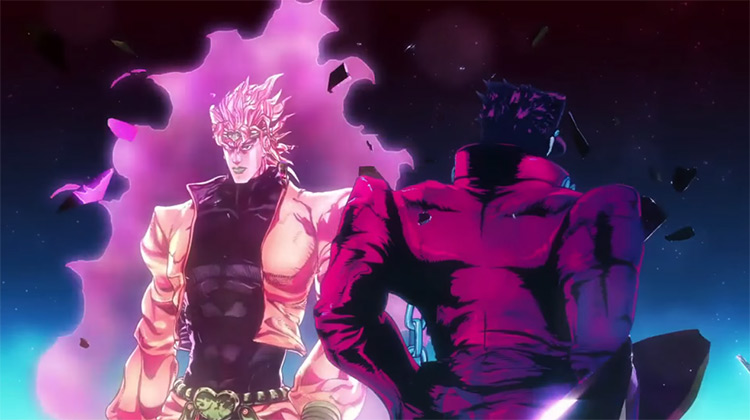
Stardust Crusader’s Part 2 begins with our characters in Egypt, closer to DIO than ever before.
The stakes are higher, the losses heavier, and time is running out.
We’re approaching a final battle over a century in the making.
The opining begins with clockwork pieces and ominous vocals. We see Jonathan and Dio as teenagers and adults, then Joseph as an aged man – then, Jotaro. The guitar kicks in, and we’re shown a similarly stylized series of poses and action sweeps – it feels like a manga brought to the screen in the truest sense.
It ends with DIO behind Jotaro, a flurry of fists, and the repeated screaming of ‘ORA ORA ORA’.
That is, until the penultimate episodes.
This is where David Productions went above and beyond, providing an alternate opening in preparation for the last fight (a tradition they stick to from hereon).
In this version, there are sound effects accompanying every motion and attack. This time instead of DIO simply appearing behind Jotaro, we hear him activate [The World], slow down time and cease the music… and reposition himself behind our protagonist.
Time resumes, and the ORA ORA ORA occurs.
This is one of the coolest moments of the adaptation, and a genuine surprise for those unaware.
7. Part 4: Opening 3: Great Days
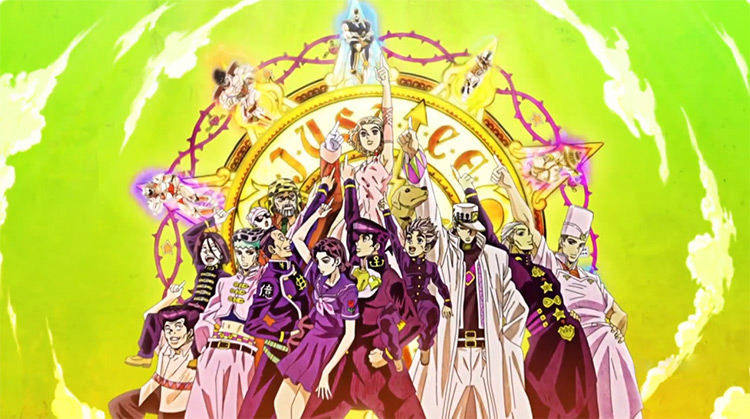
We’re in the final arcs now.
Josuke, Jotaro, and the rest of Morioh have fought hard to reach the source of their troubles: a killer hidden in their comfortable town.
This opening combines the stylistic intent of the two previous openings – the upbeat extravagance of ‘Crazy Noisy Bizarre Town’ and dark fringe feeling of ‘Chase’ – to wrap up Diamond is Unbreakable perfectly.
It starts with beating drums, energetic guitars, catchy trumpets and EDM sensibilities before jumping into a soulful montage of Morioh accompanied with camp dance music. We’re shown those who have fallen, the Stands of those unwilling to let their town fall to decadence, and the joy of each of them.
Yoshikage Kira is alluded to, but never happy. His time is approaching the end, and it shows on everyone’s faces.
They emotionally point to the sky, symbolizing a new day, and we’re left feeling happy.
There are three different versions of Great Days.
The best one is the BiteZaDusto variant that has Kira rewinding and distorting time, mixing the order of events and confusing the viewer. The music is chaotic as we’re taken in reverse through the events of the original version, ending with the satisfaction of Kira smiling.
This is his win.
The other two versions feature sound effects and English vocals, giving plenty of variety to the experience and making the idea of skipping a single opening punishable by death.
6. Part 1: Opening 1: So No Chi No Sadame
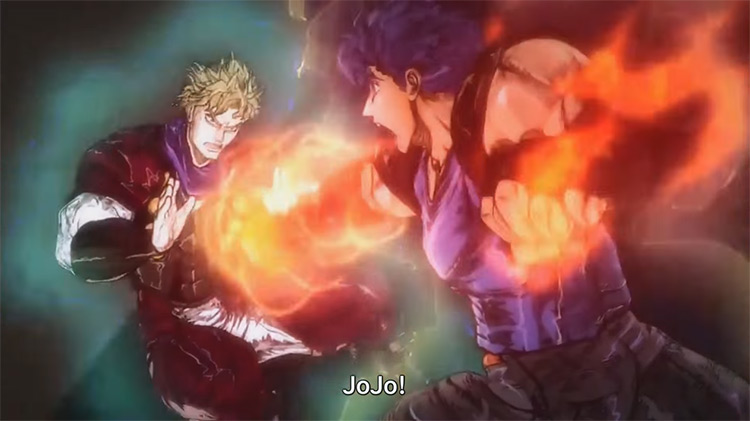
Straight away we’re hit with manga panels flashing across the screen, each signifying parts to come – Joseph, Jotaro, Josuke, Giorno, and Jolyne – before ending on a beautifully animated Jonathan.
We’re taken through the Joestar mansion, introduced to various important events of Phantom Blood rendered in an outstanding fusion of Araki’s artwork and animated CGI.
The song – an emphatic testosterone-driven ballad with trumpets and electric guitars – pumps us up for the events of the part, before fading out in an iconic scream of ‘JO-JO!’
This part signifies so much to so many people.
It’s the start of it all, a reaffirmation of the adaptions existence after thirty years of publication. Absolutely legendary.
5. Part 4: Opening 1: Crazy Noise Bizarre Town
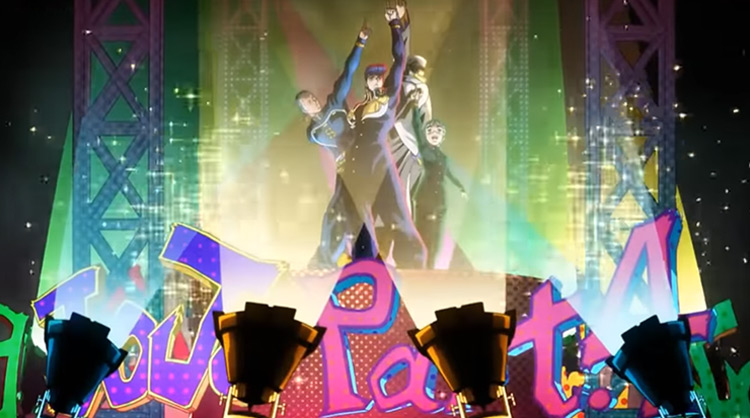
Disco poses and a rainbow funk aesthetic immediately let us know the tone is different now, the game has changed.
The entire silhouetted cast of Diamond is Unbreakable flies across the scene and we’re given a bird’s eye view of Morioh before we fly down to meet our main characters.
Josuke’s dancing, posing, and youthful energetic personality is reminiscent of Joseph. But with an even greater sense of flamboyance, cementing him as his own JoJo. Completely different to part 3’s Jotaro.
The music is exciting, fun, camp, and happy, bursting at the seams with personality and flavor.
It sets the tone perfectly: a bizarre slice of life with hidden darker undertones.
Then episodes 8 and 9 are given their own distinct EDM versions for variety, and to cover the Yukako Yamagishi arc.
I actually prefer the EDM alternative more, but I’m glad we have both!
4. Part 4: Opening 2: Chase
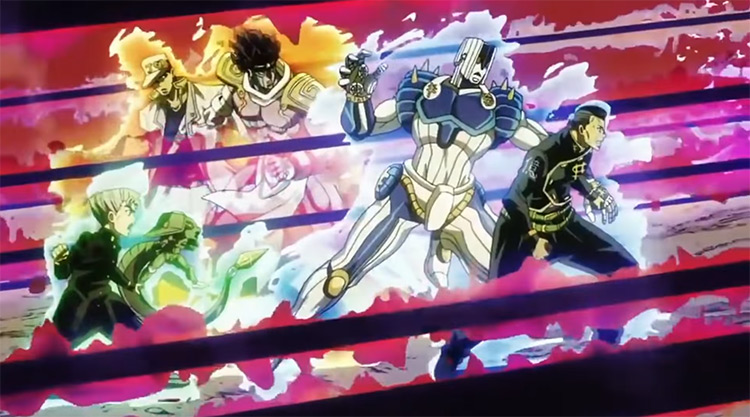
Things are picking up. People are dead and there’s a killer lurking the streets.
The chase is on.
We’re given a somber portrayal of Morioh, all of our beloved characters looking downcast and regretful, as a clashing electric guitar riffs out over-top.
It’s reminiscent of Bleach’s openings, combining energetic punk rock with stoic imagery of urban life to tell its own styled story.
One-by-one we witness the citizens of Morioh attempting to live out their lives… But something is there, in the background, intrusive and stopping them. Then the chorus starts and we’re taken whirling down the alleyway before flying into action.
They battle their way to the core of their issue, a lone man with a terrifying aura.
Josuke reaches out to grab him – but before contact, the opening ends.
There was an English-vocal version briefly used, too. But they’re otherwise identical.
3. Part 5: Opening 1: Fighting Gold
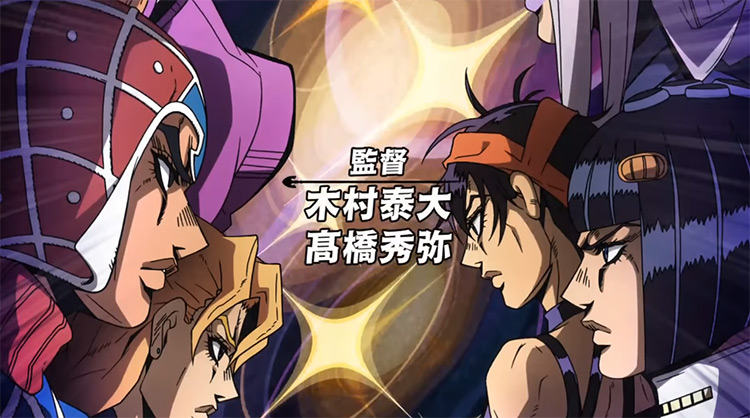
We’re elsewhere now. The characters in this part are out for blood, on both sides, giving the scene a gladiatorial atmosphere.
The opening begins with Michelangelo, an energetic guitar, then blood dripping onto the floor.
From there we’re launched into gorgeously-rendered snapshots of our characters and the problems they each hold.
The chorus kicks in and we’re introduced to their Stands one by one, ending on a somber shot of them all walking away.
There’s an English version on this as well, also great.
This opening sets the tone of Golden Wind perfectly, differentiating it from the other parts with a more mature and sad vibe reminiscent of agent, spy, and mafia films of the 1980s.
The animation is fluid and beautiful. Every frame given a ridiculous level of foreshadowing and action. Absolutely sublime.
2. Part 5: Opening 2: Traitor’s Requiem
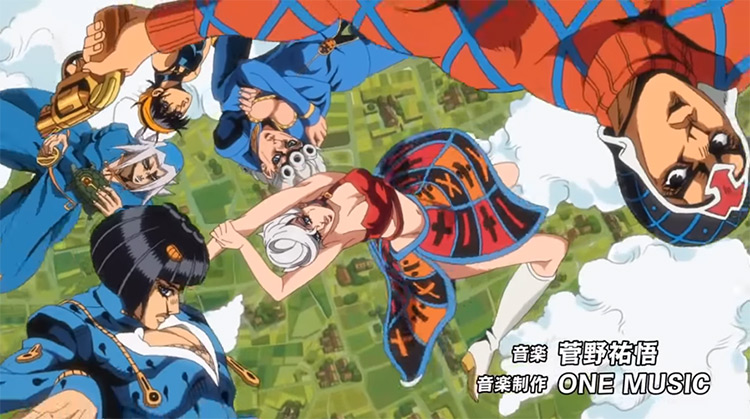
We’re here at last, at the threshold.
The lines have been drawn, betrayals enacted, and bloodshed.
The gang is on the cusp of a suicide mission. And those unafraid to proceed will board a boat heading for their last stops.
We’re given a gorgeous rendition of Italy. A solemn kissing of the hand while beautiful orchestral instrumentals and a swooning voice settles the title card. Then without warning, we’re thrown into chaos again.
We get various highlights of the journey so far and action montages. This ends on a climactic fight in the center of Rome between Giorno and the boss, still silhouetted.
There are four different versions of Traitor’s Requiem: an English one, one with sound effects, and two villain interrupting variants.
In the first alternate version, time stops for Diovolo to reposition himself behind Giorno, mocking the boy in Italian as he does. Time then resumes and Giorno is caught off guard.
In the other villain variant, Golden Experience Requiem occurs, and the tides are turned in favor of Giorno. Absolutely epic in every way.
This opening matches the atmosphere and tone of Golden Wind gloriously. Glorious really is the right word.
1. Part 2: Opening 1: Bloody Stream
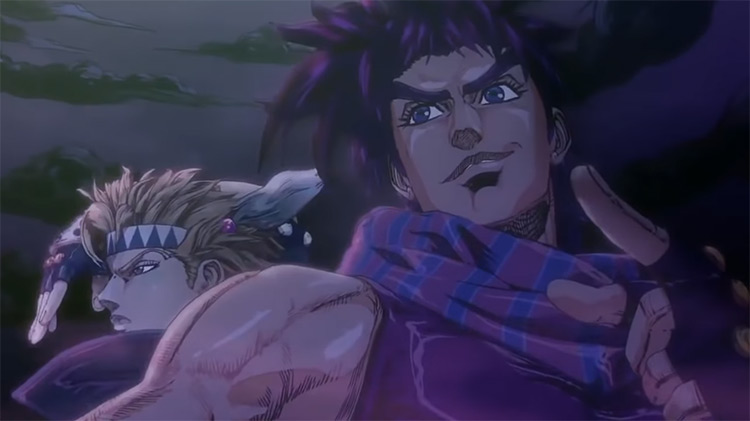
How can you beat Bloody Stream? It can’t be done.
If Phantom Blood’s ‘So No Chi No Sadame’ was a manly anthem heavily resembling the source material, then Battle Tendency’s opening is embolic of the flamboyance and extravagance brought into the series with the introduction of Joseph.
Immediately we’re shot into the 1900s, rife with color and personality and cheek.
The animation is honestly perfect: fluid and expressive, and constantly alluding to events to come.
It’s dynamic, action-packed, and hits an emotional middle peak before blasting off into a raucous ensemble of jazz and jive into exceptionality by the instrumentals.
This is JoJo’s Bizarre Adventure, in all its hyper-masculine femininity and bravado – wacky and fun and wonderful.
